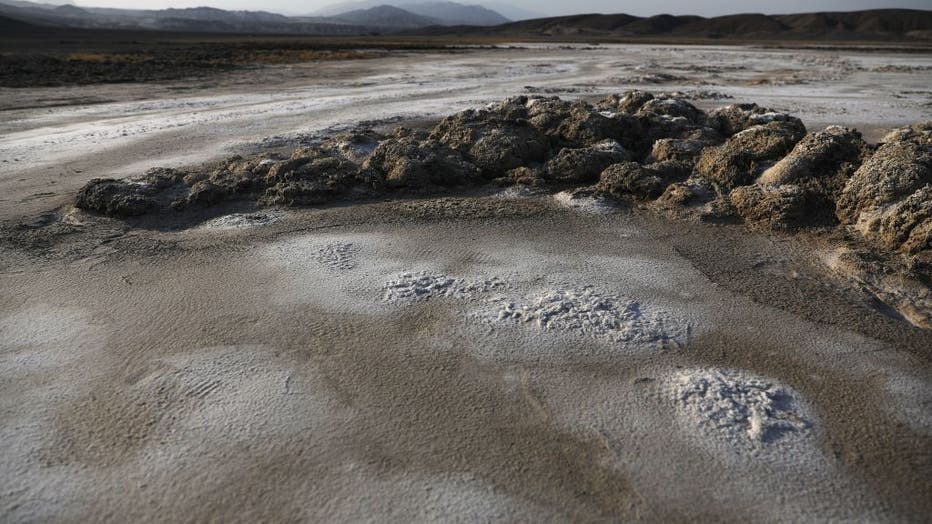Death Valley temperature hit 130 degrees, close to world record
On Friday, Death Valley National Park in California recorded a staggering high temperature of 130 degrees Fahrenheit.
If verified, it would be among the hottest temperatures ever measured on the planet.
The National Weather Prediction Center tweeted about the heat, saying it’s the highest temperature reading of 2021.
A temperature of 130 degrees Fahrenheit was also recorded on August 16, 2020 in the park. The two readings of 130 degrees are the highest known temperatures recorded on Earth in 90 years.
In July 1913, the same Furnace Creek desert area in the national park hit 134 degrees Fahrenheit. That reading is considered the highest reliably measured temperature on Earth.

DEATH VALLEY NATIONAL PARK, CALIFORNIA - AUGUST 18: Salt flats stretch out near Furnace Creek on August 18, 2020 in Death Valley National Park, California. The temperature reached 130 degrees at Death Valley National Park on August 16, hitting what m
RELATED: Extreme heat to bake Southern California through weekend
The sweltering temperatures in Death Valley Friday come as the National Weather Service has issued an excessive heat warning for several areas in California and Nevada through Monday night.
Death Valley officials said to expect high temperatures of 110 to 120 degrees Fahrenheit in the park over the next couple of days.
Forecasters warned that much of California will see dangerously hot weekend weather, with highs in triple digits in the Central Valley, mountains, deserts and other inland areas because of strengthening high pressure over the state. Heat warnings did not include major coastal populations.
California’s power grid operator issued a statewide Flex Alert to avoid disruptions and rolling blackouts. Flex Alerts call for consumers to voluntarily conserve electricity by reducing the use of appliances and keeping the thermostat higher during evening hours when solar energy is diminished or no longer available.
Gov. Gavin Newsom also on Friday signed an emergency proclamation suspending certain requirements so the state could obtain additional power capacity.
Temperatures are spiking again this week in parts of the U.S. West, though not as severely as the end of June. The heat is making it difficult to fight wildfires in parts of a region struggling with a historic drought tied to climate change.
A California wildfire that closed nearly 200 square miles of forest forced evacuations across state lines into Nevada. In southern Oregon, a wildfire burning near Klamath Falls more than doubled overnight. And in Arizona, increased humidity slowed a big wildfire that posed a threat to the rural community of Crown King.
Climate change is considered a "key driver" of a trend that is creating "longer and more intense dry seasons that increase moisture stress on vegetation and make forests more susceptible to severe wildfire," the California Department of Forestry and Fire Protection said recently.
RELATED: June ends up 2nd-hottest on record in Seattle
Meanwhile, the Pacific Northwest continues to see increased heat as well.
Officials in Washington and Oregon announced emergency rules this week that provide heat protection for outdoor workers.
Last month, Seattle, Portland and many other cities in the area broke all-time heat records, with temperatures in some places reaching above 115 degrees Fahrenheit.
Oregon has recorded 116 deaths from the heatwave, while Washington state said Thursday that its toll had risen to 78. Authorities say hundreds of deaths may ultimately be attributed to the heat throughout the region.
Oregon’s emergency rules adopted Thursday strengthen requirements for employers to safeguard workers from the extreme heat, including expanding access to shade and cool water. Advocates are calling it the nation’s most protective heat rules.
Washington’s new rules take effect Tuesday and update existing mandates that are in place from May through September, when the state's multibillion-dollar agricultural industry relies on tens of thousands of farmworkers to tend and harvest crops such as apples, cherries, hops and asparagus.
This story was reported from Detroit. The Associated Press contributed.


